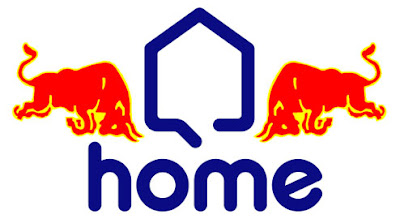The behemoth conspicuously absent from any direct interaction with their customers has been the pharmaceutical industry. The only real presence on the web is Johnson & Johnson’s “JNJ BTW,” a blog intended to reach out primarily to customers as a resource for information on a variety of topics, from the pure “business” aspects of Johnson & Johnson (such as acquisitions of new companies) to topics with a more personal appeal, such as child safety or health and wellness.
There is no direct to consumer (DTC) messages embedded in the blog. For that matter, there are no products mentioned at all in the articles I sampled, which is consistent with the cautionary approach many drug companies take when it comes to being social.
But Marc Monseau, editor of the Johnson & Johnson blog (also on Twitter, @JNJComm), notes the importance of not just watching the blogosphere and social media as it evolves, but becoming an active participant in the community in order to keep a hand on the pulse of their customers. As he states on the blog’s about page:
On JNJ BTW, there will be talk about Johnson & Johnson — what we are doing, how we are doing it and why. There will be comment on the news about our company and the industry — occasionally correcting any mistakes (not that that ever happens!) or simply providing more context. I hope and expect that some of my colleagues will eventually join me on this blog.
We may not always be able to talk about product-specific issues, news from our operating companies or issues that fall under regulatory or legal constraints. But we’re going to do what we can to talk openly, directly and to the best of our knowledge. I’m sure we will learn more as we blog, so keep in mind that nothing on JNJ BTW is set in stone.
Thinking Differently: More Interaction by Your Readers
Johnson & Johnson is on the right track with their blog but it’s time for them to look for ways to be more engaging with their readers. It doesn’t have to be complex; perhaps a polling system to find out what readers think about a particular topic, or maybe a way for readers to contribute to the content of the pages themselves would be good ways to draw more visitors.
On the biotech side, a new site that’s got a really good approach is, “What Can Biotech Do for You,” which is devoted entirely to answering questions on how biotechnology can help the consumer in a number of different areas. Sponsored by the Biotechnology Industry Organization (BIO), the intent is to create a social site that makes visitors feel as if they really are driving the direction of the content. And it isn’t just limited to blogging. IAmBiotech, appears in such social media outlets as Facebook and Twitter, increasing their reach and appeal to a growing number of people who not only benefit from biotech, but also who just might share an interest in this community and who want to be able to find one another more easily.
Just What the Doctor Ordered
In order to be successful using social media, Pharmaceutical companies shouldn't overthink legal issues. Social media and its accepted etiquette lend themselves nicely to what could be considered an orthodox model of interaction between Pharmaceutical companies and the consumer by FDA standards. Using social media as a tool to educate people in short bursts and status updates would keep information fresh, and would provide a series of resources people could follow and to which they could eventually connect. Lack of self-promotion means that DTC advertising would not only be something to avoid because of the scrutiny that could ensue from the FDA, but also because drug advertisements are just not something people would find palatable on a social network.
Some models that the pharmaceutical industry could potentially leverage to establish a more social presence:
- Establish an organization with competitors that can act as a source of information for all things in the pharmaceutical industry. Allow consumers to shape content, and create a voice for the site that speaks to more than just the consumer, but to the skeptic and the enthusiast alike. Answer questions about what the Pharmaceutical industry can do for them, much like web sites for Biotech already do.
- Create Twitter accounts that can serve as sources of information. In order to properly follow "fair balance" rules set for by the FDA, Pharmaceutical companies can’t provide a brand name product and the indications it treats without also advising of the risks of the medication.
- Blog. If nothing else, Pharmaceuticals should consider adopting Johnson & Johnson’s model of blogging and at least providing a better connection to their consumers. Consumers could have a direct method of providing valuable feedback that they couldn’t otherwise communicate.
Not all things will work for all products, and your target audience needs to be considered before launching a massive social media campaign. But with several million users on each social media outlet, there is significant opportunity to participate in a way that is consistent with the philosophy of providing quality content. When it comes to disease and treatment, the more information you can provide more quickly, the better you will be perceived by your customer.



